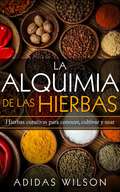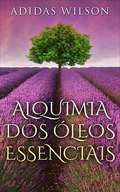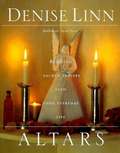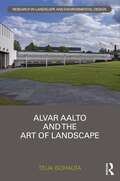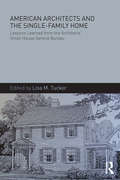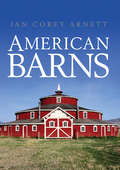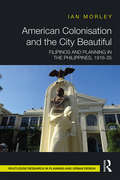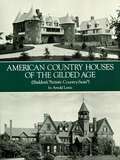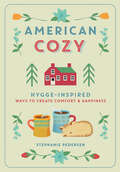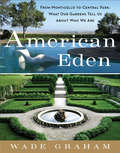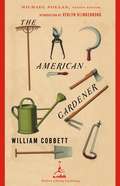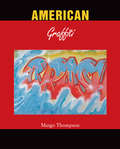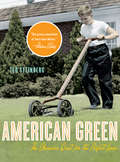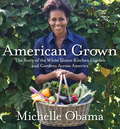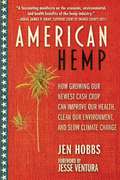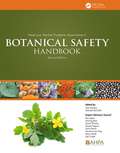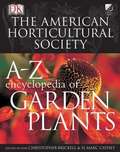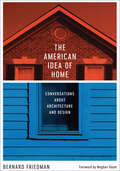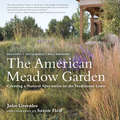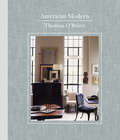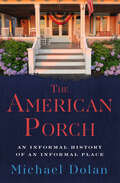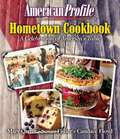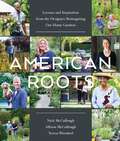- Table View
- List View
A Alquimia das Ervas: Um Guia para Iniciantes - Conhecendo, cultivando e aplicando ervas medicinais.
by Rodrigo Brandani Adidas WilsonAo selecionar ervas que consigam se desenvolver excepcionalmente bem, seja em ambientes abertos ou fechados, seja em vasos ou no solo, você deverá ter em mente o que você deseja obter de seu cultivo de ervas e vegetais. Se o espaço destinado ao seu cultivo recebe menos do que cinco horas diárias de luz solar talvez seja melhor plantar suas ervas em um ambiente fechado, e para agua-las e para colhê-las quando for cozinhar usando elas. Aliás, plantar em um ambiente fechado ainda lhe ajudará a ficar livre de ervas daninhas, pragas e variações de temperatura. Sementes são baratas, porém, demoram muito tempo para crescer demandam muitos recursos para fazê-lo. Por outro lado, existem as mudas, que crescem mais rapidamente, porém, geralmente encontram-se disponíveis somente na primavera e no verão. Muitas ferramentas são necessárias para se fazer o trabalho na sua plantação, dentre elas temos: pás, enxadas, luvas, vasos, enfim, tudo o que for necessário para fazer o serviço. Lembre-se de que solo fértil também é um elemento importante, pode-se prepara-lo naturalmente ou compra-lo pronto em lojas especializadas. Caso opte por fazer seu cultivo em um espaço fechado utilizando vasos você pode comprar misturas de adubos prontos, feitos especialmente para este tipo de cultivo, assim não terá problemas para plantar suas ervas, e, além de facilitar seu trabalho, estes adubos prontos também previnem que pragas destruam suas plantas.
La alquimia de las hierbas: hierbas curativas para conocer, cultivar y usar
by Adidas WilsonLas hierbas selectas pueden crecer excepcionalmente bien en interiores o exteriores, en contenedores o en el suelo, todo depende de lo que desea hacer. Si el espacio recibe menos de cinco horas de luz solar al día, es mejor optar por la casa para un acceso más fácil, especialmente para regar y cocinar. Además, esto ayuda a prevenir malezas, plagas o temperaturas fluctuantes. Las semillas son bastante económicas, pero toman más tiempo y requieren más recursos para crecer. Mientras que, por otro lado, las plantas de semillero son de cultivo más rápido, pero solo están disponibles en primavera y verano. Varias herramientas de jardinería son esenciales, puede ser una pala, guantes, ollas, recipientes, prácticamente todo lo que necesita para el trabajo. Y recuerde, algunos suelos fertilizados también son importantes, esto puede generarse naturalmente, o con una solución de compost de uso general de una tienda de jardinería. Para jardinería en contenedores, una mezcla de tierra para macetas empaquetada puede ser de gran ayuda, ya que casi no tendrá que preocuparse por las plagas. Tabla de contenidos Introducción 1. Cultive verduras caseras en su patio trasero 2. Imhotep y el origen de la medicina 3. St. John Wort y la depresión 4. Hierbas en espacios pequeños 5. Remedios para el virus VPH 6. Medicina avanzada de sociedades antiguas 7. Historia de la medicina Ayurveda 8. Medicina china tradicional 9. El cáncer y las hierbas 10. Medicina nativa estadoinidense 11. Hierbas para mejorar el sexo 12. Los aceites de eucalipto y sus beneficios 13. Remedios para las alergias 14. Hierbas para desatascar sus arterias 15. Hierbas naturales nativas estadounidenses 16. Hierbas desintoxicantes 17. Salvia en la medicina herbaria 18. Jardín de hierbas hidropónicas 19. Aumente su inmunidad y combata la infección con hierbas antivirales 20. Tratamientos a base de hierbas y suplementos para la
Alquimia Dos Óleos Essenciais
by Adidas WilsonÓleos essenciais têm qualidade variável. Se você é um aromaterapeuta ou um consumidor, avaliar a qualidade dos óleos essenciais (EOs) não é fácil. Eles são originários de todo o mundo e empresas, ou fornecedores obtê-los de atacadistas ou agricultores cuja integridade e práticas aprenderam a confiar. O consumidor final não tem ideia e não pode avaliar essas práticas e relacionamentos.
Altars: Bringing Sacred Shrines into Your Everyday Life
by Denise LinnTFrom the book: he urge to create sacred spaces is so deep in the human psyche that we often create them unconsciously. A gathering of photos on a piano, an arrangement of personal objects on a desk or fireplace mantel, are perhaps outer manifestations of an inner desire to establish hallowed and holy spaces in our environment. Denise Linn, the internationally acclaimed author of Sacred Space, speaks directly to this primal longing for sacred places. In Altars, she demonstrates in photos and text how you can enrich your home or office by creating unique shrines for healing and contemplation. Beautifully illustrated and thoroughly practical, Altars shows how to Create personal altars for devotion, transitions in life, manifestation, and love Choose the optimum place to locate your home altar, according to the points of the compass and the ancient principles of feng shui Select altar objects that are particularly suited to your special needs Purify yourself and your altars with incense, prayers, drumming, and chanting Everyone who yearns to enter into the mysterious and wondrous realms, to infuse ordinary moments with sacred meaning, will find a great abundance of beauty, inspiration, and wisdom in this unique book. Renowned lecturer, author, and visionary Denise Linn has researched spiritual practices from cultures throughout the world for more than twenty-nine years. Calling upon this wealth of knowledge, she originated the unique and groundbreaking feng shui system Interior Alignment . Her synthesis of practical information and spirituality has had a deep impact on thousands of participants worldwide. She is also the author of nine books, including Sacred Legacies, The Secret Language of Signs, Quest, and the international bestseller Sacred Space. Includes appendices which explain the meanings (traditionally) of items frequently used on altars: stones, shells, flowers, herbs and more.
Alvar Aalto and The Art of Landscape (Routledge Research in Landscape and Environmental Design)
by Teija IsohautaAlvar Aalto and The Art of Landscape captures the essence of the Finnish architect’s landscape concept, emphasising culture and tradition, which characterised his approach to and understanding of architecture as part of the wider environment. From the forests of his youth to sights from his travels, Alvar Aalto (1898–1976) was influenced by outdoor landscapes. Throughout his career, he felt the need to shape the terrain and this became a signature of his architecture. Divided into five chapters, this book traces Aalto’s relationship with landscape, starting with an analysis of his definitions and descriptions of landscape language, which ranged from natural references and biological terms, to synonyms and comparisons. It includes beautifully illustrated case study projects from the 1950s and 1960s, discussing Aalto’s transformation of different landscapes through topography, terracing and tiers, ruins and natural elements, horizon outlines, landmarks, and the repetition of form. Featuring archival sketches, garden drawings, and plans, the book also contains Aalto’s text ‘Architecture in the Landscape of Central Finland’ from 1925 in the appendix. This book provides fascinating, untold insights into Aalto’s relationship with landscape and how this developed during his lifetime, for scholars, researchers, and students interested in architecture and landscape history, landscape art, and cultural studies.
American Architects and the Single-Family Home: Lessons Learned from the Architects' Small House Service Bureau
by Lisa M. TuckerAmerican Architects and the Single-Family Home explains how a small group of architects started the Architects’ Small House Service Bureau in 1919 and changed the course of twentieth-century residential design for the better. Concepts and principles they developed related to public spaces, private spaces, and service spaces for living; details about the books they published to promote good design; as well as new essays from contemporary practitioners will inspire your own designs. More than 200 black and white images.
American Barns
by Jan ArnettThe heart of every working farm and ranch, the barn is an icon of rural America. This book chronicles - and celebrates - all the main types, and looks at how these treasures of early American architecture developed. It explains how a wealth of immigrant construction methods and range of environments and climates resulted in a fascinating variety of barn styles in the United States, from the earliest rare Dutch examples to simpler English types and others in more surprising shapes (round or even polygonal) crafted by the Shakers in the 1800s. It highlights the most notable, famous and historic barns that the reader can visit, and features highlights the efforts of conservation groups to preserve America's barns and find innovative ways to repurpose these glorious old structures as homes and studios--and as living monuments of rural heritage.
American Colonisation and the City Beautiful: Filipinos and Planning in the Philippines, 1916-35
by Ian MorleyAmerican Colonisation and the City Beautiful explores the history of city planning and the evolution of the built environment in the Philippines between 1916 and 1935. In so doing, it highlights the activities of the Bureau of Public Works’ Division of Architecture as part of Philippine national development and decolonisation. Morley provides new archival materials which deliver significant insight into the dynamics associated with both governance and city planning during the American colonial era in the Philippines, with links between prominent American university educators and Filipino architecture students. The book discusses the two cities of Tayabas and Iloilo which highlight the significant role in the urban design of places beyond the typical historiographical focus of Manila and Baguio. These examples will aid in further understanding the appearance and meaning of Philippine cities during an important era in the nation’s history. Including numerous black and white images, this book is essential for academics, researchers and students of city and urban planning, the history and development of Southeast Asia and those interested in colonial relations.
American Country Houses of the Gilded Age: (Sheldon's "Artistic Country-Seats") (Dover Architecture)
by A. LewisThe "Gilded Age," the three decades following the Civil War, were years of astounding economic growth. Vast empires in oil, shipping, mining, banking, lumber, transportation, and related industries were formed. It was an era in which fortunes were made and lost quickly, almost easily; a period that encouraged - nearly demanded - the public display of this newly acquired wealth, power, and prestige. It was during these heady, turbulent years that a new type of domestic architecture first appeared on the American landscape. Called the "country seat" or "cottage," these houses were grandiose in scale - imposing facades complemented by manicured gardens, with exceptionally large and impressive reception rooms, halls, parlors, dining rooms, and other public areas. Intended exclusively for the very well-to-do, these buildings were designed by some of the finest and most influential architectural firms in America: McKim, Mead & White; Bruce Price; Peabody & Stearns; Theophilus P. Chandler, Jr.; Lamb & Rich; Wilcox & Johnston; and many others. The first, best, and most exquisite documentation of this surge of architectural creativity was the 1886-87 publication of George William Sheldon's Artistic Country-Seats: Types of Recent American Villa and Cottage Architecture with Instances of Country-Club Houses. It presented exceedingly fine photographs, clearly detailed plans and elevations, as well as Sheldon's own commentary for a total of 97 buildings (93 houses and 4 casinos). Most structures were located in new England and the Middle Atlantic states, and embraced the full spectrum of architectural and artistic expressions. This present volume reproduces all of Sheldon's fascinating and historically important photographs and plans, and adds a new, thoroughly accurate text by Arnold Lewis (Professor of Art, the College of Wooster, Wooster, Ohio) that includes the most useful information supplied by Sheldon and also reports on the present condition of each house or casino, providing analyses of elevations and plans, observations about family life in the 1880s, and brief biographical comments about the clients and architects. Sheldon's photographs connect us with a time and style of living that today increasingly seem more the realm of fiction than fact. Yet, in the pages of this important collection, they are brought fresh to life as they appeared when they were new and times were very different.
American Cozy: Hygge-Inspired Ways to Create Comfort & Happiness
by Stephanie PedersenThe wildly popular phenomenon of hygge gets a warm American twist with this gifty, illustrated guide from the bestselling Danish-American author. With their overscheduled lifestyles, Americans can’t always find time for the people and things they love. Enter American Cozy, which uses the Danish phenomenon of hygge—comfort, togetherness, and well-being—to bring coziness and ease to readers’ homes, work, and lives. Filled with charming four-color illustrations, it explores organization and home décor; entertaining; cooking; creating a happier, more productive work life; de-cluttering; and slowing down.
American Eden: From Monticello to Central Park to Our Backyards
by Wade GrahamThe story of our nation and ourselves as told through our country's most significant gardens and their creators. From Frederick Law Olmsted to Richard Neutra, Michelle Obama to our neighbors, Americans throughout history have revealed something of themselves--their personalities, desires, and beliefs--in the gardens they create. Rooted in the time and place of their making, as much as in the minds and identities of their makers, gardens mirror the struggles and energies of a changing society. Melding biography, history, and cultural commentary in a one-of-a-kind narrative, American Eden presents a dynamic, sweeping look at this country's landscapes and the visionaries behind them. Monticello's gardens helped Jefferson reconcile his conflicted feelings about slavery-and take his mind off his increasing debt. Edith Wharton's gardens made her feel more European and superior to her wealthy but insufficiently sophisticated countrymen. Martha Stewart's how-to instructions helped bring Americans back into their gardens, while at the same time stoking and exploiting our anxieties about social class. Isamu Noguchi's and Robert Smithson's experiments reinvigorated the age-old exchange between art and the garden. American Eden offers an inclusive definition of the garden, considering intentional landscapes that range from domestic kitchen gardens to city parks and national parks, suburban backyards and golf courses, public plazas and Manhattan's High Line park, reclaimed from freight train tracks. And it exposes the overlap between garden-making and painting, literature, and especially architecture-the garden's inseparable sibling-to reveal the deep interconnections between the arts and their most inspired practitioners. Moving deftly through time and place across America's diverse landscapes--from Revolutionary-era Virginia to turn-of-the-century Chicago to 1960s suburban California--and featuring a diverse cast of landscape-makers--whether artists, architects, or housewives, amateurs or professionals, robber barons, politicians, reformers, or dreamers--Wade Graham vividly unfolds the larger cultural history through more personal dramas. Beautifully illustrated with color and black-and-white images, American Eden is at once a different kind of garden book and a different kind of American history, one that offers a compelling, untold story--a saga that mirrors and illuminates our nation's invention, and constant reinvention, of itself.
The American Gardener: A Treatise On The Situation, Soil And Laying Out Of Gardens (Modern Library Gardening)
by William CobbettOut of print since 1856, The American Gardener is perhaps the first classic work of American gardening literature. In it, William Cobbett, Victorian England's greatest and most gifted journalist, draws upon his experiences during a two-year exile on a Long Island, New York, farm to lay out the rudiments of gardening for American farmers and, ultimately, to tailor principles developed in wet, drippy, weed-prone British gardens to their fine, sun-drenched counterparts in America. Full of practical knowledge memorably imparted with Cobbett's gift for the indelible phrase, The American Gardener offers advice still useful today on all aspects of gardening, with special attention to those plants successful in the New World, including the artichoke ( indeed, a thistle upon a gigantic scaleo) and the increasingly ubiquitous potato. Rediscovered 180 years after its composition, The American Gardener is evidence of a great mind and pen at work in the earliest days of American gardens. This Modern Library edition is published with a new Introduction by Verlyn Klinkenborg, a New York Times editorialist and the author of The Rural Life, Making Hay, and The Last Fine Time.
American Graffiti
by Margo ThompsonDepuis le début des années 1970, les graffeurs décorent l'extérieur des rames de métro avec des tags toujours plus grands et toujours plus élaborés. Dans le schéma primitiviste, les graffeurs, en tant qu'artistes en marge, offraient de nouvelles perspectives à la société américaine. Ils tendaient un miroir à la culture hégémonique. Les références aux médias ou à des elements culturels que les artistes intégraient dans leurs créations revêtent aujourd'hui une importance toute particulière, parce qu'elles représentent un point de contact entre les cultures et ont rendu cette « sousculture » plus accessible à son nouveau public. Cette forme d'expression résolument rebelle est ici analysée par Margo Thompson qui met en relation l'art du graffiti avec l'art contemporain. Tout comme les graffeurs apportaient une voix à une classe ethnique sous-représentée, l'auteur, grâce à une thèse originale, tend à servir d'ambassadrice à cette forme d'art souvent méconnue.
American Green: The Obsessive Quest For The Perfect Lawn
by Ted Steinberg“Ted Steinberg proves once again that he is a master storyteller as well as our foremost environmental historian.”—Mike Davis The rise of the perfect lawn represents one of the most profound transformations in the history of the American landscape. American Green, Ted Steinberg's witty exposé of this bizarre phenomenon, traces the history of the lawn from its explosion in the postwar suburban community of Levittown to the present love affair with turf colorants, leaf blowers, and riding mowers.
American Grown: The Story of the White House Kitchen Garden and Gardens Across America
by Michelle ObamaIn April 2009, First Lady Michelle Obama planted a kitchen garden on the White House's South Lawn. As fresh vegetables, fruit, and herbs sprouted from the ground, this White House Kitchen Garden inspired a new conversation all across the country about the food we feed our families and the impact it has on the health and well-being of our children. Now, in her first-ever book, American Grown, Mrs. Obama invites you inside the White House Kitchen Garden and shares its inspiring story, from the first planting to the latest harvest. Hear about her worries as a novice gardener - would the new plants even grow? Learn about her struggles and her joys as lettuce, corn, tomatoes, collards and kale, sweet potatoes and rhubarb flourished in the freshly tilled soil. Get an unprecedented behind-the-scenes look at every season of the garden's growth, with striking original photographs that bring its story to life. Try the unique recipes created by White House chefs and made with ingredients just picked from the White House garden. And learn from the White House Garden team about how you can help plant your own backyard, school or community garden. Mrs. Obama's journey continues across the nation as she shares the stories of other gardens that have moved and inspired her: Houston office workers who make the sidewalk bloom; a New York City School that created a scented garden for the visually impaired; a North Carolina garden that devotes its entire harvest to those in need; and other stories of communities that are transforming the lives and health of their citizens. In American Grown, Mrs. Obama tells the story of the White House Kitchen Garden, celebrates the bounty of gardens across our nation, and reminds us all of what we can grow together.
American Hemp: How Growing Our Newest Cash Crop Can Improve Our Health, Clean Our Environment, and Slow Climate Change
by Jen HobbsIf there ever was a time to build an American hemp industry, the time is now.In Jesse Ventura’s Marijuana Manifesto, former Minnesota Governor teamed up with Jen Hobbs to explain why it’s time to fully legalize cannabis and end the War on Drugs. Through their research, it became clear that hemp needed its own manifesto. Jen Hobbs takes up this torch in American Hemp.December of 2018 marked a largely unprecedented victory for cannabis. The 2018 Farm Bill passed and with it hemp became legal. What the federal government listed for decades as a schedule 1 narcotic was finally classified as an agricultural crop, giving great promise to the rise of a new American hemp industry. Filled with catchall research, American Hemp examines what this new domestic crop can be used for, what makes it a superior product, and what made it illegal in the first place; the book also delves into the many health and medical benefits of the plant. Hobbs weighs in on how hemp can improve existing industries, from farming to energy to 3D printing, plus how it can make a serious impact on climate change by removing toxins from the soil and by decreasing our dependence on plastics and fossil fuels.American Hemp lays out where we are as a nation on expanding this entirely new (yet ancient) domestic industry while optimistically reasoning that by sowing hemp, we can grow a better future and save the planet in the process.
The American Herbal Products Association Botanical Safety Handbook
by Zoe Gardner Michael McGuffin<p>Access to accurate, evidence-based, and clinically relevant information is essential to anyone who uses or recommends herbal products. With input from some of the most respected experts in herbal and integrative medicine, this completely revised edition of the American Herbal Products Association’s Botanical Safety Handbook reviews both traditional knowledge and contemporary research on herbs to provide an authoritative resource on botanical safety. The book covers more than 500 species of herbs and provides a holistic understanding of safety through data compiled from clinical trials, pharmacological and toxicological studies, medical case reports, and historical texts. <p>For each species, a brief safety summary is provided for quick reference, along with a detailed review of the literature. Easily understood classification systems are used to indicate the safety of each listed species and the potential for the species to interact with drugs</p>
The American Horticultural Society A to Z Encyclopedia of Garden Plants (Revised American Edition)
by Christopher Brickell H. Marc CatheyAmerican Horticultural Society A to Z Encyclopedia of Garden Plants is a comprehensive, detailed, and illustrated alphabetical guide to some 15,000 ornamental plants and an essential reference for all gardeners and horticulturists. Easy to Use Plants are arranged alphabetically by their botanical names for fast, straightforward access, and previous names and common names appear as cross-references throughout the main text.
The American Idea of Home: Conversations about Architecture and Design
by Bernard Friedman“Home is an idea,” Meghan Daum writes in her foreword, “a story we tell ourselves about who we are and who and what we want closest in our midst.” In The American Idea of Home, documentary filmmaker Bernard Friedman interviews more than thirty leaders in the field of architecture about a constellation of ideas relating to housing and home. The interviewees include Pritzker Prize winners Thom Mayne, Richard Meier, and Robert Venturi; Pulitzer Prize winners Paul Goldberger and Tracy Kidder; American Institute of Architects head Robert Ivy; and legendary architects such as Denise Scott Brown, Charles Gwathmey, Kenneth Frampton, and Robert A. M. Stern. The American idea of home and the many types of housing that embody it launch lively, wide-ranging conversations about some of the most vital and important issues in architecture today. The topics that Friedman and his interviewees discuss illuminate five overarching themes: the functions and meanings of home; history, tradition, and change in residential architecture; activism, sustainability, and the environment; cities, suburbs, and regions; and technology, innovation, and materials. Friedman frames the interviews with an extended introduction that highlights these themes and helps readers appreciate the common concerns that underlie projects as disparate as Katrina cottages and Frank Lloyd Wright Usonian houses. Readers will come away from these thought-provoking interviews with an enhanced awareness of the “under the hood” kinds of design decisions that fundamentally shape our ideas of home and the dwellings in which we live.
The American Idea of Home: Conversations about Architecture and Design
by Bernard FriedmanOver thirty leaders in American architecture discuss the most significant issues in the field today.&“Home is an idea,&” Meghan Daum writes in her foreword, &“a story we tell ourselves about who we are and who and what we want closest in our midst.&” In The American Idea of Home, documentary filmmaker Bernard Friedman interviews more than thirty leaders in the field of architecture about a constellation of ideas relating to housing and home. The interviewees include Pritzker Prize winners Thom Mayne, Richard Meier, and Robert Venturi; Pulitzer Prize winners Paul Goldberger and Tracy Kidder; American Institute of Architects head Robert Ivy; and legendary architects such as Denise Scott Brown, Charles Gwathmey, Kenneth Frampton, and Robert A. M. Stern. The American idea of home and the many types of housing that embody it launch lively, wide-ranging conversations about some of the most vital and important issues in architecture today. The topics that Friedman and his interviewees discuss illuminate five overarching themes: the functions and meanings of home; history, tradition, and change in residential architecture; activism, sustainability, and the environment; cities, suburbs, and regions; and technology, innovation, and materials. Friedman frames the interviews with an extended introduction that highlights these themes and helps readers appreciate the common concerns that underlie projects as disparate as Katrina cottages and Frank Lloyd Wright Usonian houses. Readers will come away from these thought-provoking interviews with an enhanced awareness of the &“under the hood&” kinds of design decisions that fundamentally shape our ideas of home and the dwellings in which we live.
The American Meadow Garden: Creating a Natural Alternative to the Traditional Lawn
by John Greenlee Saxon HoltIf there's one lesson every homeowner must learn, it's this: The traditional lawn is a huge, time consuming, synthetic-chemical sucking mistake. The time has come to look for new ways to create friendly, livable spaces around our homes. In The American Meadow Garden, ornamental grass expert John Greenlee creates a new model for homeowners and gardeners. For Greenlee, a meadow isn't a random assortment of messy, anonymous grasses. Rather, it is a shimmering mini-ecosystem, in which regionally appropriate grasses combine with colorful perennials to form a rich tapestry that is friendly to all life — with minimal input of water, time, and other scarce resources. Kids and pets can play in complete safety, and birds and butterflies flock there. A prairie style planting is a place you want to be. With decades of experience as a nurseryman and designer, John Greenlee is the perfect guide. He details all the practicalities of site preparation, plant selection, and maintenance; particularly valuable are his explanations of how ornamental grasses perform in different climates and areas. Gorgeous photography by Saxon Holt visually illustrates the message with stunning examples of meadow gardens from across the country. We've reached a stage where we can no longer follow past practices unthinkingly, particularly when those practices are wasteful and harmful to the environment. It's time to get rid of the old-fashioned lawn and embrace a sane and healthy future: the American meadow garden.
American Modern
by Thomas Obrien“One of those designers whose interior and furniture designs look discovered, not created . . . both comfortable and exquisite, calm and eclectic.” —Apartment TherapyDesigner and merchant, collector and tastemaker, Thomas O’Brien has made a career of translating cool notions of modernism into an easy and generous array of modern styles that anyone can attain. Now he introduces readers to a range of those styles—from casual to formal, vintage to urban—alongside stunning photography and charming design stories.O’Brien carefully describes the design process of his chosen projects, including a downtown New York City loft, a traditional Connecticut estate, and a converted schoolhouse in eastern Long Island. Each home explores a view on the modern design spectrum he has created, as well as the individual choices that make the design unique and its mix essentially American. He explains not only what was at work to create a given style, but how readers can import those practices to their own homes and personal design sensibilities. Important design principles such as architectural authenticity, color relationships, correctness of scale, and informed collecting are threaded through a practical narrative that reads like a master class in interior design. American Modern is an inspiring design volume that will redefine the way readers think about modern interiors.“O’Brien carefully describes the design process of his chosen projects. Beautiful imagery and a unique layout describe his approach to design in a new and innovative way.” —LIFEMSTYLE“It’s like getting a glimpse into the studio paintings of a great master . . . I especially love how all of his spaces feel so gender neutral, the perfect balance.” —Cottage Farm
The American Porch: An Informal History of an Informal Place
by Michael DolanThe former American History editor explores the creation and restoration of an essential part of a twentieth-century home&’s identity—the American porch. &“In this delightful look at an American icon, journalist and documentary scriptwriter . . . Dolan traces the history of the porch, using this history to explore subjects such as architecture, history, slavery, colonialism, trade, anthropology, sociology, consumer behavior, and publishing.&” —Library Journal In 1981, Michael Dolan and his wife, Eileen O&’Toole, bought a 1926 suburban bungalow in the Palisades area of Washington, DC. It was a fixer-upper and DIY project that consumed their lives for twelve years. As rooms were transformed with updated electrical wiring and plumbing, the house&’s porch became a storage area, rotating appliances, furniture, and construction materials as they were used and discarded. After the interior renovation was completed, Michael finally turned his attention to the porch, working with contractors to resurrect it—a reconstruction that inspired him to uncover the history of porches and their significance as a symbolic piece of Americana. &“In praise of the porch: Come up and sit a spell.&” —USA Today &“A wry, well-researched look at the place and the people who rocked, talked and courted on [the American porch] for three centuries.&” —Parade &“The porch is making a comeback, gradually replacing its humbler rival the deck, which the traditionalist Dolan refers to as the platform shoe or leisure suit of American architecture.&” —Time &“Dolan amply demonstrates that the porch is primarily a means of escaping the heat and, almost as important, a locus for casual social interaction.&” —Publishers Weekly
American Profile Hometown Cookbook: A Celebration of America's Table
by Mary Carter Susan Fisher Candace Floyd"In this extraordinary cookbook, you'll find traditional American favorites with a unique twist alongside ethnic creations from around the world. Also included are helpful tips from American Profile's test kitchen as well as 30 articles on hometown festivals and fairs across the nation that give you a sneak peek into the lives of the ordinary citizens that make up hometown America. Whether it's a simple soup for the family or a full meal for visitors, the American Profile Hometown Cookbook has just the right recipe to make any gathering a special occasion."
American Roots: Lessons and Inspiration from the Designers Reimagining Our Home Gardens
by Nick McCullough Allison McCullough Teresa Woodard&“I love this book. Here are home gardens of designers from every part of our great country that are inspiring proof of a passionate vitality and freshness in American gardening today.&” — Page Dickey, author of Uprooted In recent years, bold designers have begun championing an American design aesthetic that embraces regional cultures, plants, and growing conditions. In American Roots, Nick McCullough, Allison McCullough, and Teresa Woodard highlight designers and creatives with exceptional home gardens, focused on those who push the boundaries, trial extraordinary plants, embrace a regional ethos, and express their talents in highly personal ways. Covering all the regions of the country, the profiles dive into design influences, share the back stories of the gardens and their creators, and include design tips and plant suggestions. American Roots is a beautiful invitation to reconsider how we define the American garden, filled with guidance and encouragement for anyone looking to dig more deeply into their own home garden.

